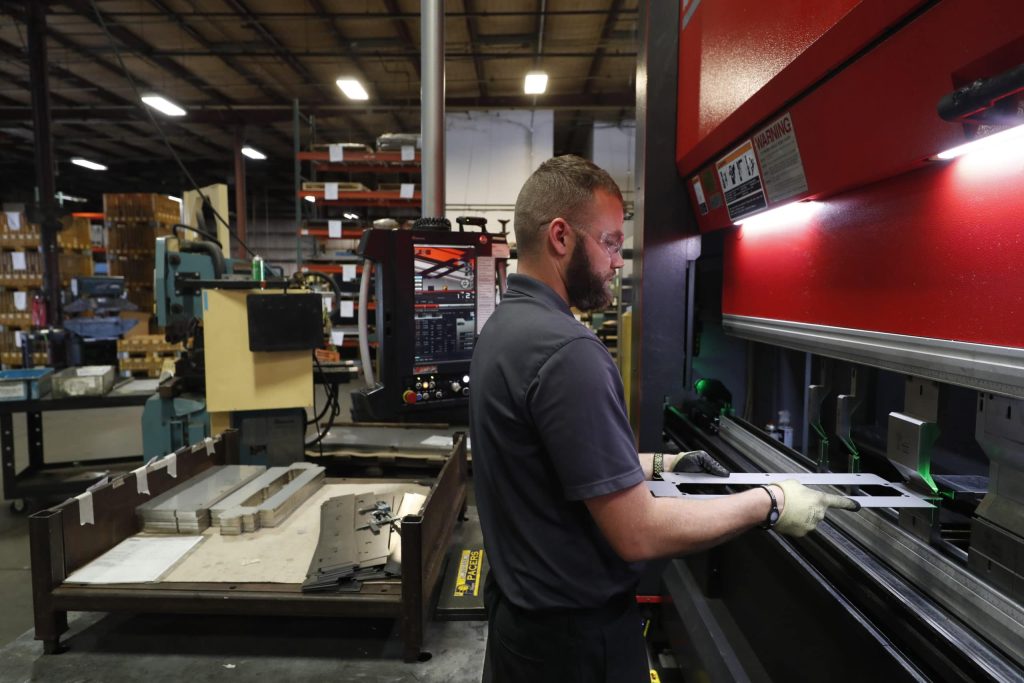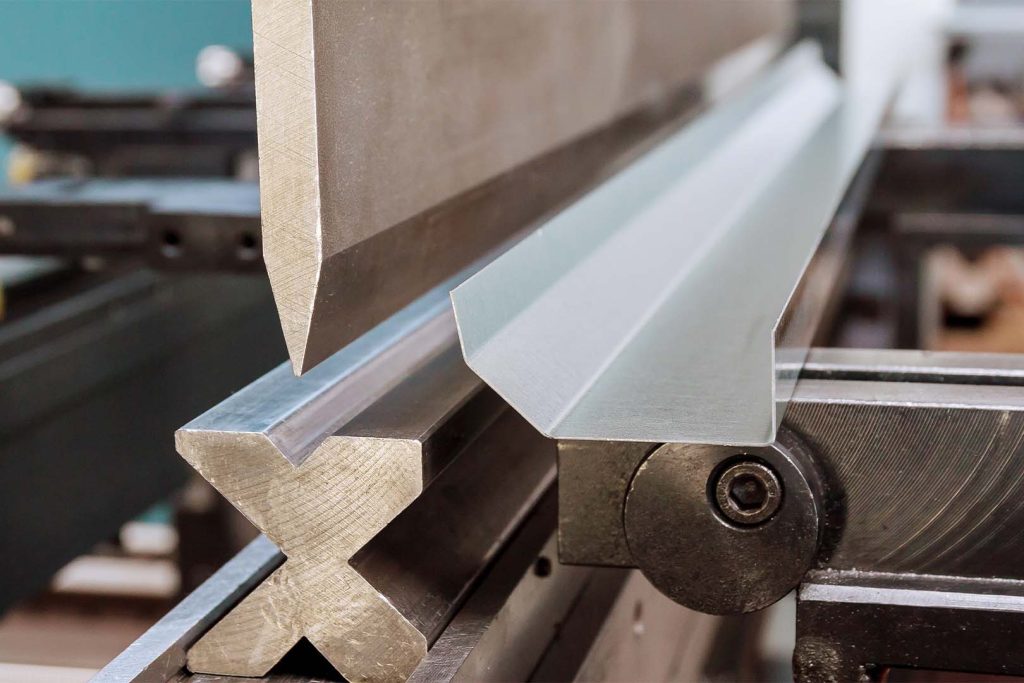Table of Contents
Gas welding is an essential skill for any metalworker, especially when it comes to sheet metal. Whether you’re looking to repair a damaged panel or create a custom piece, gas welding can help you achieve a clean and professional-looking finish. But if you’re new to the process, it can be intimidating to know where to begin.
In this guide, we’ll walk you through the basics of gas welding sheet metal, from setting up your equipment to making the perfect weld. With a little bit of practice and patience, you’ll be able to create strong and attractive welds that will last for years to come. So let’s dive in and get started!
- Choose the right gas and tip size for your sheet metal.
- Clean the metal surfaces with a wire brush or grinder.
- Secure the metal pieces in place with clamps or a vice.
- Light the torch and adjust the flame to a neutral flame.
- Heat the metal with the flame until it reaches the required temperature.
- Add filler metal to the joint and allow it to cool.
- Remove any excess filler metal and clean the weld with a wire brush or grinder.
How to Gas Weld Sheet Metal?
Gas welding is a popular technique for joining sheet metal. It involves using a flame torch to heat the metal to its melting point, then adding filler material to create a strong bond between the two pieces. If you are new to gas welding, this guide will help you learn the essentials.
1. Safety First
Gas welding can be dangerous if not done correctly. Before you start, make sure you have the proper safety equipment, including a welding helmet, gloves, and protective clothing. You should also work in a well-ventilated area to avoid inhaling toxic fumes.
It’s also important to check your equipment before starting. Ensure your gas cylinders are securely fastened and in good condition, and make sure your torch and hoses are free of leaks.
2. Choose the Right Gas and Filler
Choosing the right gas and filler material is crucial for achieving a strong weld. For sheet metal, a mixture of acetylene and oxygen is typically used. The filler material should match the base metal as closely as possible to ensure a proper bond.
Gas Types
- Acetylene: the most commonly used gas for welding due to its high temperature and versatility.
- Propane: a good choice for outdoor welding as it is less affected by wind and weather conditions.
- MAPP: a mixture of methylacetylene, propadiene, and propane. It burns hotter than propane and is good for welding thicker metals.
Filler Materials
| Base Metal | Filler Material |
|---|---|
| Steel | ER70S-6 |
| Aluminum | ER4043 |
| Copper | Phosphor Bronze |
3. Prep the Metal
Before you start welding, you need to prepare the metal. This involves cleaning it thoroughly to remove any dirt, rust, or other contaminants that could interfere with the weld. You can use a wire brush or sandpaper to clean the surface.
Next, you should clamp the metal in place to prevent it from moving during welding. This will ensure that your weld is straight and strong.
4. Set up Your Equipment
Once your metal is prepped, you can set up your welding equipment. This involves attaching your torch to your gas cylinders and adjusting the flame to the proper level.
You should also adjust the gas flow to achieve the right level of heat. This will depend on the thickness of your metal and the type of gas you are using.
5. Start Welding
With your equipment set up, you can begin welding. Hold the torch at a 45-degree angle to the metal and heat the area you want to weld. Once the metal reaches its melting point, add the filler material to create the weld.
Move the torch slowly and steadily along the joint, adding filler material as needed. Use a weaving motion to ensure an even weld bead.
6. Finishing the Weld
Once you have completed the weld, you can remove the clamps and inspect your work. If there are any gaps or defects, you can use a grinder or file to smooth them out.
You should also clean the weld to remove any residue or slag. This will ensure that your weld is strong and looks professional.
7. Benefits of Gas Welding
Gas welding has several benefits over other welding techniques. These include:
- Low cost: Gas welding equipment is relatively inexpensive compared to other types of welding equipment.
- Portability: Gas welding equipment is lightweight and portable, making it easy to move to different job sites.
- Versatility: Gas welding can be used on a wide range of metals, including steel, aluminum, and copper.
8. Gas Welding Vs. Other Welding Techniques
Gas welding is just one of several welding techniques available. Here’s how it compares to other popular methods:
| Welding Technique | Advantages | Disadvantages |
|---|---|---|
| MIG Welding | Fast, efficient, and produces a clean weld. | Requires a power source and is less portable than gas welding. |
| TIG Welding | Precise and produces a high-quality weld. | Requires more skill and is slower than gas welding. |
| Stick Welding | Good for welding thicker metals and outdoor use. | Produces a rougher weld and requires more cleanup. |
9. Troubleshooting
If you encounter problems while gas welding, there are several things you can try to fix the issue:
- Adjust the gas flow to achieve the right level of heat.
- Use a different filler material if the current one is not working.
- Clean the metal thoroughly to remove any contaminants.
- Check your equipment for leaks or other issues.
10. Conclusion
Gas welding is a versatile and cost-effective technique for joining sheet metal. By following the steps outlined in this guide, you can learn how to gas weld like a pro. Remember to prioritize safety, choose the right gas and filler, prep your metal properly, and practice your technique to achieve strong, professional results.
Frequently Asked Questions
Here are some commonly asked questions about gas welding sheet metal.
What is gas welding?
Gas welding is a welding process that uses a flame to heat the edges of two metal pieces until they melt and fuse together. The process requires a fuel gas and an oxygen gas to create the flame. Gas welding is commonly used for welding sheet metal because it produces a low-heat, low-penetration weld that is less likely to warp or distort thin metal.
Gas welding is also known as oxy-fuel welding because it uses oxygen to support the combustion of the fuel gas. The most common fuel gases used in gas welding are acetylene, propane, and MAPP gas.
What equipment do I need for gas welding sheet metal?
To gas weld sheet metal, you will need a gas welding torch, a fuel gas cylinder, an oxygen cylinder, a welding tip, and a regulator for each gas cylinder. You will also need a welding hood or goggles, gloves, and protective clothing to protect yourself from the heat and glare of the welding flame.
Gas welding equipment can be expensive, but it is a good investment if you plan on doing a lot of welding. You may also be able to rent equipment from a welding supply store or welding equipment rental company.
How do I prepare the sheet metal for gas welding?
Before you can gas weld sheet metal, you need to clean it thoroughly to remove any dirt, rust, or other contaminants that can interfere with the welding process. You can use a wire brush, sandpaper, or a grinder to clean the metal surface. You should also make sure that the edges of the metal are properly beveled or chamfered to create a good welding joint.
Once the metal is clean and prepared, you can clamp it securely in place using welding clamps or a vise. This will prevent the metal from moving or warping during the welding process.
How do I gas weld sheet metal?
To gas weld sheet metal, you will need to adjust the gas flow and flame intensity to create a small, focused flame that heats the metal evenly. You should start by heating the metal at the joint, moving the flame in a circular motion to create a pool of molten metal. Once the metal is molten, you can add filler rod to the joint to create a strong weld.
Gas welding requires a steady hand and good technique to create a strong, consistent weld. It is important to practice on scrap metal before attempting to weld your project. You should also adjust the gas flow and flame intensity as needed to maintain a consistent temperature and avoid overheating the metal.
What are the advantages of gas welding sheet metal?
Gas welding is a versatile and reliable welding process that is well-suited for welding sheet metal. Some of the advantages of gas welding sheet metal include:
- Low-heat, low-penetration welds that are less likely to warp or distort thin metal
- Ability to weld a variety of metals, including steel, aluminum, and copper
- Ability to weld in a variety of positions, including flat, vertical, and overhead
- Relatively low cost of equipment and supplies compared to other welding processes
With the right equipment and technique, gas welding can produce high-quality welds on sheet metal that are strong, durable, and aesthetically pleasing.
In conclusion, gas welding sheet metal is a valuable skill for anyone in the automotive or metalworking industry. With the right equipment and proper technique, it is possible to create strong, durable welds on a variety of metals.
It is important to always prioritize safety when gas welding, as the process involves high temperatures and potentially dangerous gases. Proper ventilation, protective gear, and a thorough understanding of the equipment and materials are all essential for a successful welding project.
With practice and patience, anyone can become proficient in gas welding sheet metal. Whether you are a hobbyist or a professional, mastering this technique can open up new possibilities for your metalworking projects and help you create high-quality, long-lasting pieces.
Request a quote today!
Please compress the file into a ZIP or RAR file before uploading. Alternatively, send through your RFQ by email.
enquires@unitymanufacture.com




